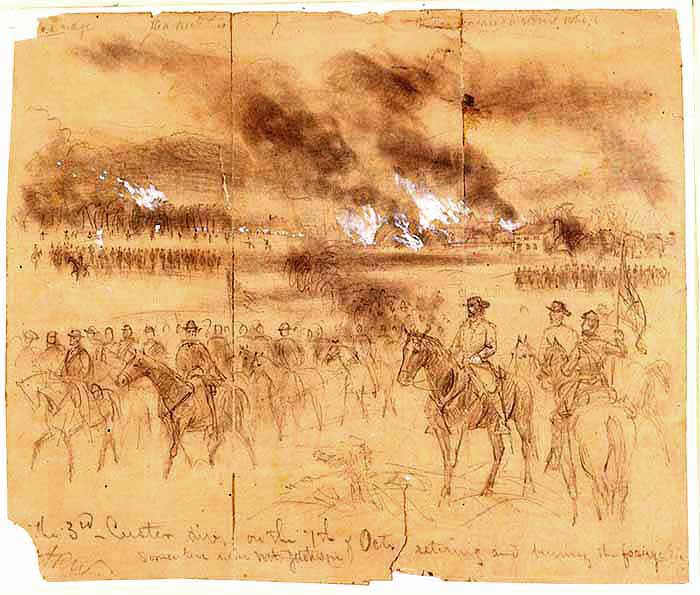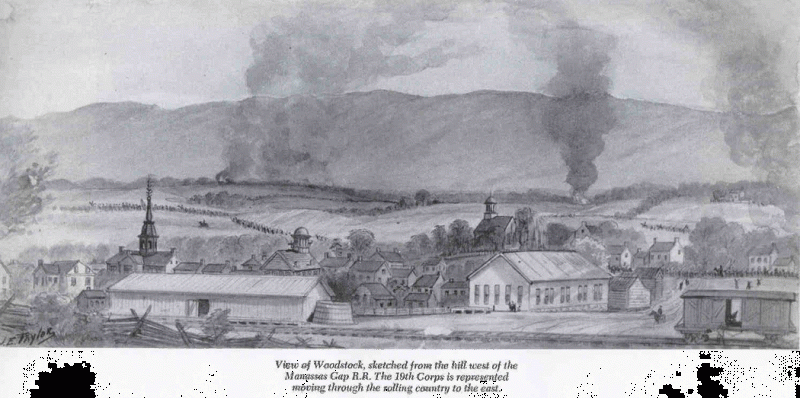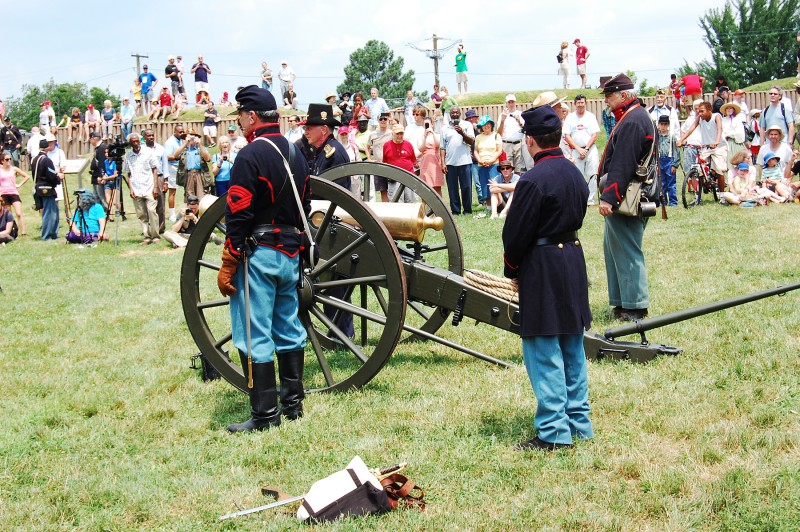 WALL STREET JOURNAL, July 26, 2014
WALL STREET JOURNAL, July 26, 2014
Violence, Chaos and the Expansion of Government Power in 1864
Gen. Grant’s order to turn the Shenandoah Valley into a ‘desert’ signaled an unsettling new chapter in the Civil War.
By James Bovard
During the second weekend of July, Washington, D.C., celebrated the repulse of Confederate Gen. Jubal Early’s attempt to capture the city 150 years ago. Fort Stevens was thronged with Abraham Lincoln impersonators and Union Army re-enactors blasting out rounds with a Civil War-era cannon, hailing a victory that saved the nation’s capital and Lincoln’s re-election campaign. No one will be celebrating what came next in the closing months of the Civil War: A vengeful, scorched-earth attack on the civilian population of Virginia.
The Confederate forces had stunned the North in the second week of July 1864 by slipping through the Shenandoah Valley to within 6 miles of the White House while the main Union force was besieging Petersburg, Va. After the rebel “Army of the Valley” had been pushed back and the city saved, Ulysses S. Grant, the supreme Northern commander, initiated what became a brutal months-long retaliatory campaign, but one also meant to shut off future incursions.
On July 15 Grant signed an order that the Shenandoah Valley should be made into a “desert” and “all provisions and stock should be removed, and the people notified to move out.” His troops would “eat out Virginia clear and clean as far as they go, so that crows flying over it for the balance of the season will have to carry their provender with them.”
Before the summer of 1864, the Civil War was primarily fought on battlefields. After failing to decisively vanquish Confederate forces in pitched clashes, the Union leadership widened the war, trying to destroy the South’s economy – with the civilian population increasingly a target. William Sherman, the commander of the Union forces menacing Atlanta in 1864, had sent a telegram to Washington saying that in the South “There is a class of people men, women, and children, who must be killed or banished before you can hope for peace and order.”
The destruction of the Shenandoah Valley was carried out by Gen. Philip Henry Sheridan. Along an almost 100-mile stretch, the sky was blackened with smoke as his troops burned crops, barns, mills and homes. Sheridan reported to Grant in October 1864 that he had ordered the torching of all houses within a five-mile radius of where a politically connected Union officer had been shot. Sheridan ordered his men to leave the valley a “barren waste” and boasted that when his operation was complete, the Shenandoah Valley “from Winchester to Staunton will have but little in it for man or beast.”
Because people lived in a state that had seceded from the Union, Sheridan acted as if they had automatically forfeited their property, if not their lives. Many who lived in the Shenandoah Valley, such as Mennonites, had opposed secession and refused to join the Confederate army, but their property was also looted and burned.
One newspaper correspondent traveling with Sheridan’s army reported: “Hundreds of nearly starving people are going North . . . not half the inhabitants of the valley can subsist on it in its present condition.” John Heatwole, author of “The Burning: Sheridan’s Devastation of the Shenandoah Valley” (1998), concluded: “The civilian population of the Valley was affected to a greater extent than was the populace of any other region during the war, including those in the path of Sherman’s infamous march to the sea in Georgia.”
Shelby Foote, in his three-volume Civil War history, noted that an English traveler in 1865 “found the Valley standing empty as a moor.” The population of Warren County, Virginia, where I grew up, fell by 11% during the 1860s thanks in part to Sheridan’s depredations.
President Lincoln congratulated Sheridan in a letter on Oct. 22, 1864: “With great pleasure I tender to you and your brave army the thanks of the nation and my own personal admiration and gratitude for the month’s operation in the Shenandoah Valley.”
The devastation visited on the Southern economy and its civilian population by Sheridan, Sherman and other Northern commanders made the South’s postwar recovery far slower than it might have been, multiplying the misery of white and black survivors. Historian Jim Downs’s “Sick From Freedom” (2012) showed how chaos and illness during and after the war contributed to the deaths of hundreds of thousands of freed slaves.
The U.S.’s targeting of civilians in the final episodes of the Civil War signified a radical change in the relation between citizens and the government that endured long after the South’s surrender at Appomattox. An 1875 article in the American Law Review noted: “The late war left the average American politician with a powerful desire to acquire property from other people without paying for it.” Ironically, a war that stemmed in large part from the blunders and follies of politicians on both sides of the Potomac resulted in a vast expansion of the political class’s presumption of power.
Mr. Bovard is the author, most recently, of the e-book memoir “Public Policy Hooligan.” [which describes, among other things, how growing up in formerly Confederate territory influenced my political thinking]
On Twitter @jimbovard
The art work in this post were not included in the WSJ article.
I took the photo below at the Ft. Stevens celebration earlier this month.



“There is a class of people men, women, and children, who must be killed or banished before you can hope for peace and order.”
Seeing as how we’ve come ’round to that again, all I can say is that Sherman was one prescient cookie.
Yes – and some of his other comments were even more grisly. But he is often treated as if his brutality was expunged by the single sentence “war is hell.”
Another thoroughly correct observation, though, I’d have to say.
Jim,
I would be interested in your response to the comments of John Barr, author of Loathing Lincoln, on your WSJ piece.
Best regards,
Kent Guida
Kent – there is ample contemporaneous evidence of the devastation that Sheridan wreaked in the Shenandoah Valley. I am chasing other rabbits at the moment; I will be writing more on “The Burning” next month. At that point, I will respond to the specifics raised by Barr, WSJ letters to the editor, online comments, and one or two other critics..